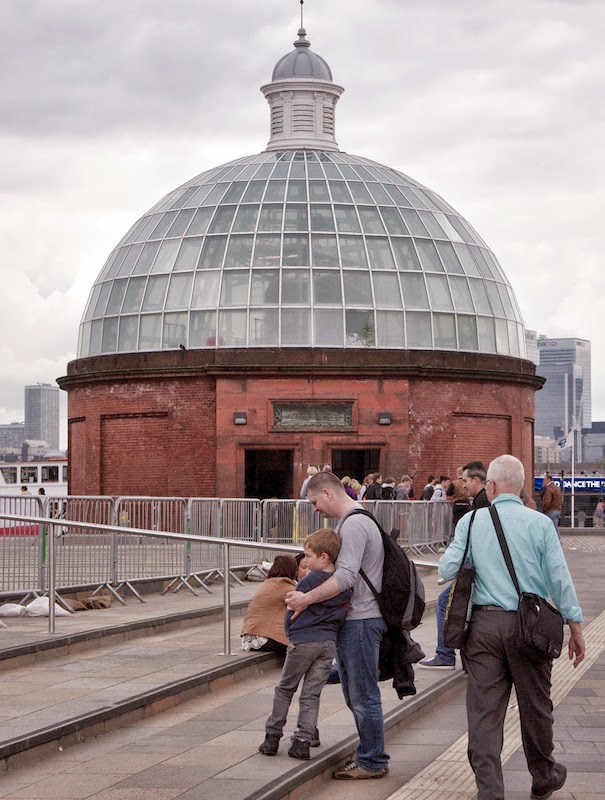After a quick visit to the visitors' centre, John and I headed directly to the mall between the buildings of the Royal Naval College. Originally commissioned as a Royal Hospital for Seamen, the buildings were designed by Sir Christopher Wren between 1692-1693
and completed by his fellow 17th century architects, Nicholas Hawksmoor and Sir John Vanbrugh. It was reassigned as the Royal Naval Academy in 1873 and stands as London's most complete Baroque landscape. That's the Queen's House visible in the middle distance.
First we visited The Chapel, built in 1779 as part of the Royal Hospital for Seamen and redesigned in 1781 with the large altar painted by Benjamin West.
Next we visited the fabulous, theatrical, Painted Hall, designed by Wren and Hawksmoor and decorated by Sir James Thornhill in 1708 to honour the role of the Royal Navy in Britain's history.
It has been described as "the finest dining hall in Europe".
John and I discovered the mirrors in the centre of the hall which reflect the ornate ceiling painting.
We couldn't resist doing our portraits in the mirror reflection.
Next we continued through the grand porch
and mall pathway towards The Queen's House.





















































